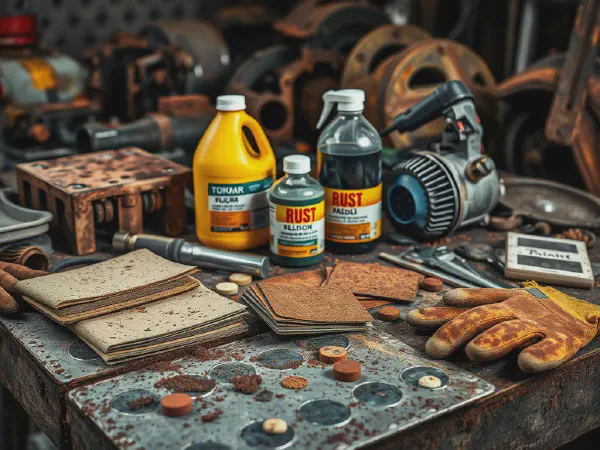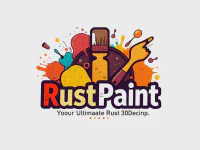Expert Guide to Automotive Rust Repair Solutions

The Ultimate Guide to Automotive Rust Repair
Automotive rust repair is a critical aspect of vehicle maintenance that ensures the longevity and safety of your vehicle. Rust can significantly weaken the structural integrity of a car, leading to costly repairs and safety issues. Understanding how to identify, address, and prevent rust formation is essential for any vehicle owner. In this guide, we will explore the various aspects of automotive rust repair, from understanding rust formation to effective repair techniques and cost considerations.
Rust is essentially the oxidation of iron, and it can appear on any metal surface exposed to moisture and oxygen. Automotive rust repair entails a series of processes designed to eliminate existing rust and protect your vehicle from future rust formation. From DIY solutions to professional repair options, knowing the right approach can save you both time and money while ensuring that your vehicle remains in top shape.
Identifying rust damage early is crucial in automotive rust repair. Small rust spots may seem insignificant but can develop into larger problems if left untreated. As a vehicle owner, being aware of the signs of rust damage can help you act promptly and avoid more extensive and expensive repairs down the line. This article will provide valuable insights into recognizing these signs and taking necessary action.
In this comprehensive guide to automotive rust repair, we will also delve into prevention strategies, the costs associated with rust repair, and the impact of rust on your vehicle's value. By the end of this article, you will have a thorough understanding of how to manage automotive rust effectively and maintain the integrity of your vehicle.
Whether you're dealing with a minor rust spot or a more severe case of rust damage, this guide equips you with the knowledge and tools needed for effective automotive rust repair.
Understanding Rust Formation
There are several types of rust that can affect vehicles, including surface rust, scale rust, and penetrating rust. Surface rust is the least severe and usually appears as a red or brown discoloration on the surface. Scale rust occurs when surface rust continues to deteriorate and leads to flaking, while penetrating rust can cause holes in the metal and poses the most serious threat to vehicle integrity.
To maintain the longevity of your vehicle, understanding the importance of Automotive rust repair is crucial.
Various factors lead to automotive rust, including exposure to moisture, road salt, and environmental pollutants. Cars that are frequently exposed to harsh weather conditions or that are driven on salted roads during winter months are at a higher risk for rust formation. Additionally, vehicles that have been poorly maintained or that have scratched paint surfaces can also be more susceptible to rust damage.
Common signs of rust damage include visible discoloration, flaking paint, and holes in the metal. Other indicators can be bubbling or swelling beneath the paint, particularly in areas where two pieces of metal overlap. Regular inspections can help catch these signs early, allowing for timely automotive rust repair.
Rust Repair Techniques
For those who prefer DIY rust repair methods, common techniques involve sanding down the rusted area, applying a rust converter, and repainting to protect the surface. Many automotive repair shops also offer kits that provide everything needed for DIY rust removal. However, it is essential to follow the instructions carefully to ensure a lasting repair.
Professional rust repair services can provide more extensive solutions, especially for larger or more severe rust issues. These services often include sandblasting to remove rust, welding to repair structural damage, and applying protective coatings. While professional services come at a higher cost, they ensure a thorough job and often come with warranties.
Essential tools for rust repair include sanders, wire brushes, rust converters, body filler, paint, and protective gear. It's crucial to have the right tools to effectively address rust problems and ensure a successful repair, whether you choose to go the DIY route or hire a professional.
Preventing Rust in Automotive
To prevent rust in automotive, best practices include regular washing of your vehicle, especially during winter months when road salt is prevalent. Applying a coat of wax or sealant can also protect the paint and create a barrier against moisture. Additionally, storing your vehicle in a garage or covered area can help minimize exposure to the elements.
Protective coatings and treatments, such as undercoating, rustproofing, and ceramic coatings, offer enhanced protection against rust formation. These treatments can be applied to the underside of the vehicle and critical areas prone to rust, providing a long-lasting shield against moisture and corrosive agents.
Regular maintenance tips to avoid rust include frequent inspections to catch early signs of rust, addressing any scratches to the paint promptly, and ensuring that drainage holes in the vehicle are unobstructed to allow for proper moisture drainage. Keeping your vehicle clean and dry can go a long way in preventing rust damage.
Cost of Rust Repair
The average cost of rust repair services can vary widely depending on the extent of the damage, with minor rust repairs typically costing between $50 and $150, while extensive repair jobs can range from $500 to $2000 or more. It's crucial to get multiple quotes from different service providers to ensure you receive the best value for your repair.
When comparing DIY vs professional repair costs, DIY methods can be significantly cheaper, often totaling under $100 if you already have some necessary tools. However, professional repairs can offer a more reliable solution, especially for more severe rust issues, so weighing the potential cost savings against the risks involved is essential.
Several factors influence repair prices, including the severity of the rust damage, the size of the affected area, and the type of vehicle. Specialty vehicles or those with custom paint jobs may incur additional costs, while vehicles in poor condition before repair may require more extensive work.
Impact of Rust on Vehicle Value
Rust can significantly affect a vehicle's resale value. Buyers often shy away from cars with visible rust damage, perceiving them as high maintenance and potentially unsafe. A rusty vehicle may sell for much less than a similar model in better condition, which makes addressing rust damage crucial for maintaining your car's value.
Evaluating rust damage before selling is essential. Sellers should conduct thorough inspections to identify any signs of rust and address them accordingly. Transparent communication regarding the condition of the vehicle, particularly if repairs were made, can also help in the sales process.
For buyers, tips for rust evaluation include checking common rust-prone areas such as wheel wells, undercarriages, and door sills. A professional inspection can provide additional assurance about the vehicle's condition and inform potential buyers of any hidden rust issues that may affect performance or safety.
